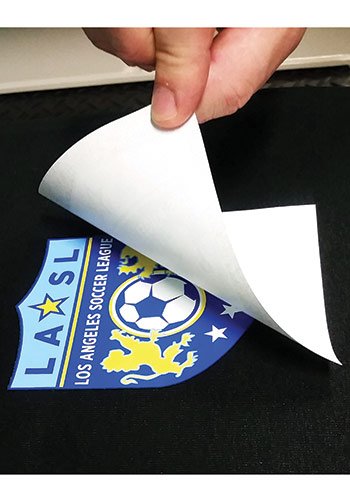
Heat transfers are fusible money makers.
Most apparel decorators are familiar with direct screen printing and heat transfers, but many are uncertain about which method is best for their businesses. While there are advantages and disadvantages to each decorating process, there are occasions when heat transfers offer the better solution.
Direct printing involves screen printing a design directly onto a garment, whereas heat transfers are printed on specialized transfer paper. For the latter, the design’s colors usually are printed in the opposite order of a direct print, with the darker colors printed first and the lighter colors printed last. Transfers also are printed in reverse, or mirror image, so the design is displayed correctly when transferred onto a garment.
Applying a transfer to a garment is fairly simple, but requires a good heat press that maintains consistent temperature across the platen. Investing in a quality heat press is essential, since the finished garment’s quality depends on it. Fusion between the transfer and garment typically occurs between 325°F-350°F, but this depends on the transfer and garment types.
Heat-Transfer Benefits
Transfer paper costs much less than a garment, so the cost of replacement — in the event of a misprint or reject — is relatively low. Another advantage of printing transfers is that multiple graphics can be arranged on one sheet and printed at the same time, provided that the same colors are used throughout. This can mean many copies of the same graphic or a variety of different graphics.
This often is referred to as “ganging” and results in a more economic use of time and resources. The designs then can be individually cut and packaged for later use. This especially is useful when printing athletic or team numbers, letters or logos, where there are several renderings of the art or different designs all using the same team colors.
In addition, transfers allow for on-demand order fulfillment, effectively reducing a shop’s inventory requirements. Different garment sizes or styles can be purchased based on a customer’s ordering preference. Inventory planning is easier because if the customer wants to purchase particular sizes or styles, the shop does not have to carry unnecessary products while hoping customers eventually will purchase them.
Garment trends come and go, but shops often don’t want to risk following them for fear of being stuck with excess inventory. On-demand transfer orders allow quicker adjustment to trends, and shop owners can order only as much of the trendy garment as the customer needs.
Transfers also can be held in inventory or as a stock item, for example, then applied to a garment at a moment’s notice, thus guaranteeing a quicker turnaround. They also are great for fulfilling smaller jobs or recurring orders, eliminating repeated setups.
Printing/Ink Parameters
Heat transfers also can be applied to hard-to-print locations on garments, such as across seams or other areas that would be difficult via direct printing. These locations are becoming increasingly popular for artwork placement. Transfers also are ideal for use as tagless labels. Furthermore, they can be applied to non-garment items, such as laundry bags, totes, neoprene joint braces, backpacks and many other items that would be difficult or impossible to screen print.
What if consumers don’t like a particular design? With direct printing, the shop would incur the possibly-substantial expense of slow-moving or unsold finished garments. With transfers, the loss is limited to the cost of the unused transfers alone.
Just as there are various inks available for different substrates, transfers can be printed with different inks to yield the best results. If the fabric stretches, a transfer with stretch capabilities can be used. There also are 3-D or other specialty inks that work well on transfers and can add interest and value to the print.
The applied transfer’s hand often is just as soft as that of a screen-printed design. Typically, there is less fibrillation and a smoother surface because of the heat press’ temperature and pressure, combined with the transfer paper’s smoothness. And in terms of durability, there is little to no difference between a screen-printed design and a heat transfer.
Garment decorators also can outsource transfer printing to reduce overhead costs and their footprints.
Heat transfers offer many benefits, both in flexibility and cost savings, and allow shops to manage inventory easier and carry fewer in-stock items.
Chris Pluck, business development director for Insta Graphic Systems, has been in the imprinted textile industry for more than 30 years. He has a background in screen printing and offset lithography technologies, and was instrumental in establishing inventive heat-fusible printing products and print application methods. For more information, visit instagraph.com.
